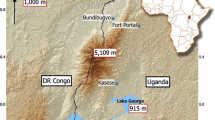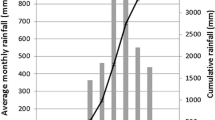Abstract
Landslide erosion has an established history in New Zealand. Some broad estimates of economic costs for short-term event damage, long-term landslide damage, and proactive measures are provided and compared on a national and international level. Frequency and magnitude analysis based on historical records of landslide-triggering rainstorms demonstrates that 1) landslides are a nationwide problem, 2) recognition and recording of these events is dependent on public awareness and therefore related to population distribution and extent of urbanized areas, and 3) deforestation increases the frequency of landslide events, but not necessarily the total magnitude of their impact. However, some regions such as Northland and Wellington in the North Island and Greymouth and North Otago in the South Island are more frequently and more strongly affected than others. Landslide occurrence in time and space, within representative study areas in Hawke's Bay, Wairarapa, and Wellington, is correlated with the climatic variable daily precipitation. Different regional hydrological thresholds for landslide triggering are established.
Similar content being viewed by others
Author information
Authors and Affiliations
Additional information
Received: 15 Ocotober 1997 · Accepted: 25 June 1997
Rights and permissions
About this article
Cite this article
Glade, T. Establishing the frequency and magnitude of landslide-triggering rainstorm events in New Zealand. Environmental Geology 35, 160–174 (1998). https://doi.org/10.1007/s002540050302
Issue Date:
DOI: https://doi.org/10.1007/s002540050302




